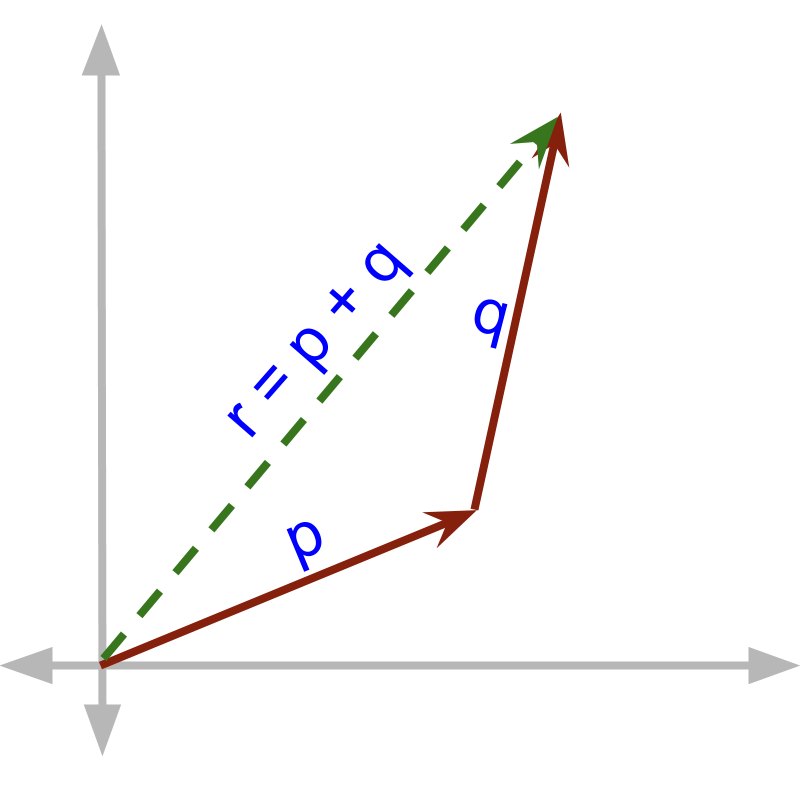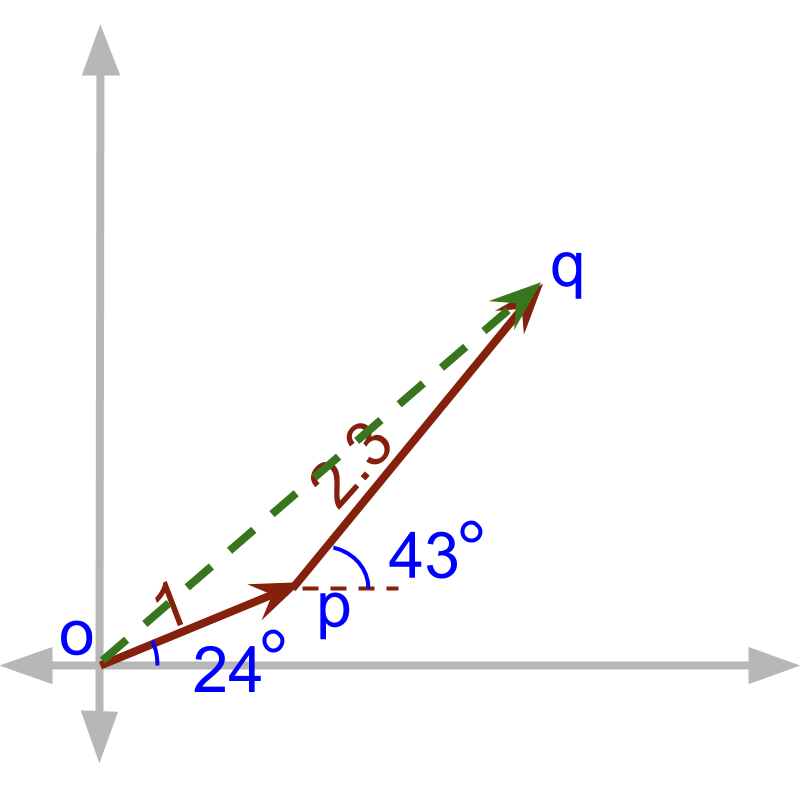
what you'll learn...
Overview
Vector Addition : Triangular Law
» sequential addition of and
 → the third side of the triangle formed by and
→ the third side of the triangle formed by and
sequential
In a bucket there is liter water and another liter water is poured in. The bucket has liter of water.
With liter, another liter is added. Scalar quantities can be added sequentially.
Two taps simultaneously fill a bucket. One fills at liter per hour and another fills at liter per hour. At the end of an hour, the bucket has liter of water.
Two streams of water are added into the bucket. Scalar quantities can be added continuously.
We have seen that two ways scalar quantities can be added - Sequentially and Continuously.
How about vectors?

A person walks for units at , then from that point, walks for units at angle. Addition of these two vectors is an example of Sequential addition of vectors. At the end of the first vector, the second vector starts and added.

Two vectors are added sequentially as given in the figure. The result of the addition is 'the third side of the triangle'.
Two vectors form a triangle with the sum as the third side of the triangle.
summary
Triangular Property of vector addition: : When two vectors are added, arrange the initial point of the second vector to the terminal point of the first vector. In that position, complete the triangle with the two vectors as the two sides. The third side, connecting initial point of the first vector and the terminal point of the second vector, is the sum of the two vectors.
Outline
The outline of material to learn vector-algebra is as follows.
Note: Click here for detailed outline of vector-algebra.
• Introduction to Vectors
→ Introducing Vectors
→ Representation of Vectors
• Basic Properties of Vectors
→ Magnitude of Vectors
→ Types of Vectors
→ Properties of Magnitude
• Vectors & Coordinate Geometry
→ Vectors & Coordinate Geometry
→ Position Vector of a point
→ Directional Cosine
• Role of Direction in Vector Arithmetics
→ Vector Arithmetics
→ Understanding Direction of Vectors
• Vector Addition
→ Vector Additin : First Principles
→ Vector Addition : Component Form
→ Triangular Law
→ Parallelogram Law
• Multiplication of Vector by Scalar
→ Scalar Multiplication
→ Standard Unit Vectors
→ Vector as Sum of Vectors
→ Vector Component Form
• Vector Dot Product
→ Introduction to Vector Multiplication
→ Cause-Effect-Relation
→ Dot Product : First Principles
→ Dot Product : Projection Form
→ Dot Product : Component Form
→ Dot Product With Direction
• Vector Cross Product
→ Vector Multiplication : Cross Product
→ Cross Product : First Principles
→ Cross Product : Area of Parallelogram
→ Cross Product : Component Form
→ Cross Product : Direction Removed